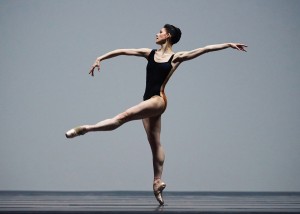San Francisco: Summer 2016 - Vancouver Ballet Society
- Home
- City Reports 2015 - 2019
- San Francisco: Summer 2016

by Allan Ulrich
In 1987, the third year of his tenure, San Francisco Ballet artistic director Helgi Tomasson commissioned from the young William Forsythe a dance called New Sleep, which was like nothing ever seen previously on the stage of the War Memorial Opera House. This was movement theatre before there was a name for it. Forsythe promised Tomasson a second original work, but he got awfully busy in Frankfurt and elsewhere for a couple of decades. So Tomasson contented himself with borrowing pre-existing Forsythiana (most of it, admittedly, enthralling).
Then, on January 24, Forsythe made good on his three-decade-old commitment with the North American premiere of Pas/Parts 2016, originally made in 1999 for the Paris Opera Ballet, but, according to the choreographer, 75 per cent revised, with great attention given to smoothing the almost imperceptible transitions between the 21 sections. This was (and now is) Forsythe’s last pure ballet piece. At the opening, it seemed dense in detail, yet airy in effect, classical in its language, pointe work and épaulement, but resolutely contemporary in its sensibility, and exploratory in the Forsythe manner. The choreographer juxtaposes solos for some of the 15 dancers with small ensembles, bringing on the entire complement for the fourth episode and the finale.
Although alluring, the bare-bones scenic apparatus keeps us focused on the dancing. The women wear multi-coloured bathing suits. The men sport outfits with black and green tops. Their world is Forsythe’s off-white, three-sided environment, evocatively lit, and it spins on its axis for 37 minutes.
Again, as he has so often done, the choreographer called upon composer Thom Willems to fashion an electronic score. What sounds like the upstairs plumbing evolves into high-pitched whistling and spare chords, hints of cha-cha and even vocalizations. Forsythe uses the music to build contrapuntal structures, as arms and legs move in directions they’re not supposed to go, and the effect is oddly harmonious.
Alone, Sofiane Sylve launched the piece and her high extensions signaled this as Forsythe territory. Then, Yuan Yuan Tan and Wei Wang met in a duet of skewed balances, arms reaching impossible distances. Later, Sylve returned for a colloquy with the extraordinary Carlo Di Lanno, in which the shifting of weight assumed a major role.
Throughout, the choreography seemed pared down, yet voluptuous in its physical explorations. As the piece proceeded, it started to look like a pageant, showcasing the San Francisco Ballet’s abundant dancing riches. Forsythe capitalized on individual dancers’ strengths. Near the end in a male trio, Joseph Walsh spun in place, spotlighting his speed and flexible wrists; James Sofranko revelled in his expressive torso; Francisco Mungamba displayed rhythmic acuity.
Forsythe draws his performers from all over the roster, so it is not unusual to find a corps member like Mungamba involved in a duet with a principal like Maria Kochetkova, looking like they belonged with each other. It takes a genius like Forsythe to find these empathetic qualities in his dancers, whose souls seem scrutinized here. Pas/Parts 2016 is a major acquisition for the company.
I cannot say the same for Liam Scarlett’s dark and enigmatic Fearful Symmetries, given its premiere on a mixed program January 27, the second San Francisco Ballet commission from the youngish English choreographer. John Adams’ sweeping 1988 minimalist orchestral essay has attracted more than a dozen choreographers, but none of the three I have seen has so under-communicated the rhythmic verve of the score, although Scarlett is obsessively responsive at the phrase level.
Instead, for inspiration, Scarlett went to the William Blake poem that provided the composer with his title and let that be his guide. So, from Adams’ ebullient triads, Scarlett spun a dour, neo-primitive epic, divided between contorted duets and crawly group endeavours. The 14 dancers emerged from the abyss under David Finn’s massive LED light sculpture with the men, dressed in black caveman getup, exercising their shoulders and rolling around on the floor a lot. Scarlett aims for earthiness, cladding the women in flat shoes.
Fearful Symmetries is a stop-and-start affair, lit so ineptly that details of partnering just disappeared in the murk. With this and his first local commission, Hummingbird, Scarlett seems infatuated with the new brutalism. Every duet adds up to an ugly encounter (millennial audiences apparently find partner abuse meaningful), in which metaphors for sex lead us down some disturbing paths. The work enlisted some of the best dancers on the roster, including Sylve, Frances Chung, Lorena Feijoo, Joan Boada (in his farewell season), and Tan and Davit Karapetyan who, at the end share a lyrical coda. Too little, too late. That San Francisco Ballet is a co-commissioner of Scarlett’s full-evening Frankenstein ballet, slated for 2017 after a Royal Ballet premiere, should not necessarily be regarded as good news.

